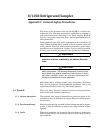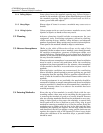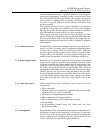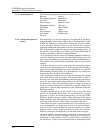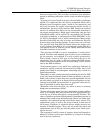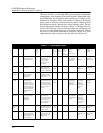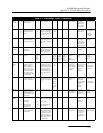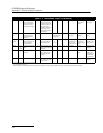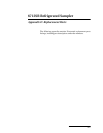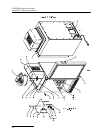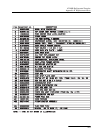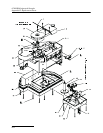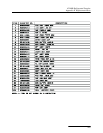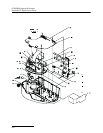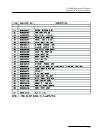
6712SR Refrigerated Sampler
Appendix C General Safety Procedures
C-8
Ozone O
3
Irritant and poison-
ous. Strong electrical
odor. Strong oxidizer.
Colorless. At 1 ppm,
strong sulfur-like odor.
1.66 Max. naturally occur-
ring level is 0.04 ppm.
0.05 ppm causes irrita-
tion of eyes and nose. 1
to 10 ppm causes
headache, nausea; can
cause coma. Symp-
toms similar to radia-
tion damage.
0.08 0.04 — — Near bottom. Where ozone is
used for disin-
fection.
Detectable odor
at 0.015 ppm.
Sludge
Gas
—*** Mostly a simple
asphyxiant. May be
practically odorless,
tasteless.
Variable Will not support life. No data. Would
vary widely with
composition.
5.3 19.3 Near top of
structure.
From digestion
of sludge.
See compo-
nents.
Sulfur
Dioxide
SO
2
Colorless, pungent
odor. Suffocating, cor-
rosive, poisonous,
non-flammable.
2.26 Inflammation of the
eyes. 400 to 500 ppm
immediately fatal.
50
to
100
10 — — At bottom, can
combine with
water to form
sulfurous acid.
Industrial waste,
combustion,
common air pol-
lutant.
Detectable taste
and odor at low
concentration.
To lu e n e C
5
H
12
to
C
9
H
20
Colorless, benzene-like
odor.
3.14 At 200-500 ppm, head-
ache, nausea, bad taste,
lassitude.
200 100 1.27 7.0 At bottom. Solvent. Combustible gas
indicator.
Turpentine C
10
H
16
Colorless, Characteris-
tic odor.
4.84 Eye irritation. Head-
ache, dizziness, nau-
sea, irritation of the
kidneys.
— 100 At bottom. Solvent, used in
paint.
1. Detectable
odor at low
concentrations.
2.Combustible
gas indicator.
Xylene C
8
H
10
Colorless, flammable 3.66 Narcotic in high con-
centrations. less toxic
than benzene.
— 100 1.1 7.0 At bottom. Solvent Combustible gas
indicator.
* Percentages shown represent volume of gas in air.
** For concentration over 0.3%.
***Mostly methane and carbon dioxide with small amounts of hydrogen, nitrogen, hydrogen sulfide, and oxygen; occasionally traces of carbon monoxide.
Table C-1 Hazardous Gases (Continued)




